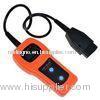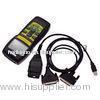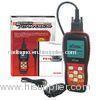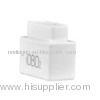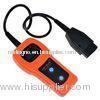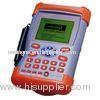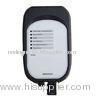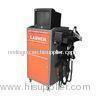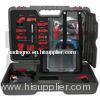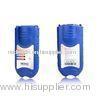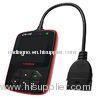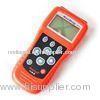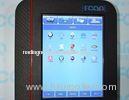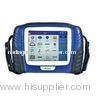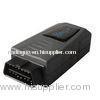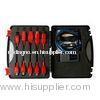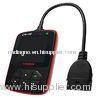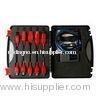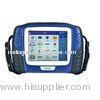|
Shenzhen Star Automotive Technology Co.,Ltd
|
U281 Car Engine Light Diagnostic Tool For Passat / Beetle / Skoda
| Place of Origin: | Zhejiang, China (Mainland) |
|
|
|
| Add to My Favorites | |
| HiSupplier Escrow |
Product Detail
<span style="font-family: arial,
U281 Car Engine Light Diagnostic Tool For Passat / Beetle / Skoda
Specifications
u281 car engine diagnostic scanner tool
1.For Audi/Seat/Skoda/Jetta/Golf/Beetle/Touareg/GTI/ Passat
read DTC of engine,abs,et
u281 car engine diagnostic scanner tool
100% BRAND NEW & ORIGINAL!!!
1 YEAR WARRENTY!!!
THE FASTEST SHIPPING !!!
OUTSTANDING CUSTOMER SERVICE!!!
Description:
U281 is a kind of auto device for reading and erasing trouble code in vehicles, sometimes called car reader. Though so small, light and handy, which is dynamic and fashionable in design, competitive in price and easy to use.
U281 is specially designed for car owners or DIY. With a U281, you may quickly find out trouble causes (troubleshooter) of electronically controlled systems on your car, by simply connecting U281 with the diagnostic socket, via reading the trouble code (DTC) shown on U281, identifying, locating and checking out trouble causes with attached user's manual.
Note: This reader can only work with Volkswagen and Audi (Audi/Seat/Skoda/Jetta/Golf/Beetle/Touareg/GTI/ Passat ) sold worldwide of 1990 or CAN Protocol cars.
Product Specifications:
1.Works with Volkswagen and Audi (Audi/Seat/Skoda/Jetta/Golf/Beetle/Touareg/GTI/ Passat and more) sold worldwide of 1990 or CAN Protocol cars.
2.Reads and erases Diagnostic Trouble Codes (DTCs) of Engine, ABS, Airbags and Automatic Transmission.
4.Turns off check engine light.
5.Highly reliable and accurate.
6.Easy-to-read crystal-clear backlit 2-line LCD display.
Easy to use with one plug-in.
7.Stand-alone unit with no need for an additional laptop computer to operate.
8.Small in size and conveniently fits in your palm.
9.Performs continuous DTC scan.
10.Specially designed for DIYers and car-owners.
11.Safely communicates with the on-board computer.
12.No batteries needed-power provided via detachable OBD II cable.
13.User's manual contains VW/AUDI Diagnostic Trouble Code Definitions.
14.One-year warranty.
Dimensions:
• 55cm*15cm*3cm. Extension Cable length = 80 cm
• Specification: 16-pin OBDII Standard Socket
• Voltage: DC 10V~12V
• Temperature: -20-50
• Display: 2line LCD
Does My Car Have OBD-II?
All cars and light trucks built and sold in the United States after January 1, 1996 were required to be OBD II equipped. In general, this means all 1996 model year cars and light trucks are compliant, even if built in late 1995.
Two factors will show if your vehicle is definitely OBD II equipped:
1) There will be an OBD II connector located under or around the dashboard, and
2) There will be a note on a sticker or nameplate under the hood: "OBD II compliant".
Where is the connector located?
The connector must be located within three feet of the driver and must not require any tools to be revealed. Look under the dash and behind ashtrays.
The Three Flavors of OBD II
While the parameters, or readings, required by OBD II regulations are uniform, the auto manufacturers had some latitude in the communications protocol they used to transmit those readings to scanners. Naturally, each felt they had the one true way, so we have three different OBD II communications protocols in use.
What Communications Protocol does my vehicle use?
As a rule of thumb, GM cars and light trucks use SAE J1850 VPW (Variable Pulse Width Modulation). Chrysler products and all European and most Asian imports use ISO 9141 circuitry. Fords use SAE J1850 PWM (Pulse Width Modulation) communication patterns.
There are some variations among captive imports such as the Cadillac Catera, a German Opel derivative, which uses the European ISO 9141 protocol.
On 1996 and later vehicles, you can tell which protocol is used by examining the OBD II connector:
J1850 VPW--The connector should have metallic contacts in pins 2, 4, 5, and 16, but not 10.
ISO 9141-2--The connector should have metallic contacts in pins 4, 5, 7, 15, and 16.
J1850 PWM--The connector should have metallic contacts in pins 2, 4, 5, 10, and 16.
The Three Flavors of OBD II
While the parameters, or readings, required by OBD II regulations are uniform, the auto manufacturers had some latitude in the communications protocol they used to transmit those readings to scanners. Naturally, each felt they had the one true way, so we have three different OBD II communications protocols in use.
What Communications Protocol does my vehicle use?
As a rule of thumb, GM cars and light trucks use SAE J1850 VPW (Variable Pulse Width Modulation). Chrysler products and all European and most Asian imports use ISO 9141 circuitry. Fords use SAE J1850 PWM (Pulse Width Modulation) communication patterns.
There are some variations among captive imports such as the Cadillac Catera, a German Opel derivative, which uses the European ISO 9141 protocol.
On 1996 and later vehicles, you can tell which protocol is used by examining the OBD II connector:
J1850 VPW--The connector should have metallic contacts in pins 2, 4, 5, and 16, but not 10.
ISO 9141-2--The connector should have metallic contacts in pins 4, 5, 7, 15, and 16.
J1850 PWM--The connector should have metallic contacts in pins 2, 4, 5, 10, and 16.

